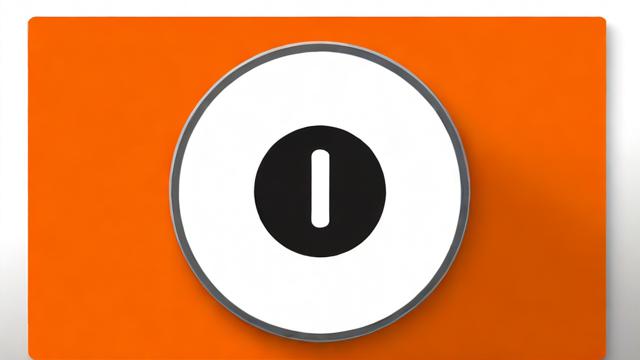window.location.href属性来导航到新的页面。当用户点击按钮时,可以设置一个事件监听器来改变当前页面的URL,从而实现跳转到新的页面。在现代网页开发中,使用JavaScript实现按钮点击后跳转到新的页面是一个常见的需求,本文将详细介绍如何使用JavaScript来实现这一功能,并提供相关的代码示例和解释。

一、基本概念与原理
JavaScript简介
JavaScript是一种广泛应用于客户端网页开发的脚本语言,它能够为网页添加动态效果和互动性,使得用户操作更加流畅和便捷。
按钮元素
在HTML中,按钮通常使用<button>标签进行定义,按钮可以包含文本或图标,并且可以通过CSS进行样式化。
页面跳转
页面跳转指的是从一个网页导航到另一个网页的过程,这可以通过多种方式实现,包括使用超链接(<a>标签)、表单提交以及通过JavaScript控制。
二、实现按钮点击跳转的步骤
HTML部分
我们需要在HTML中创建一个按钮,并为其分配一个唯一的ID,以便在JavaScript中进行引用。
<!DOCTYPE html>
<html lang="en">
<head>
<meta charset="UTF-8">
<title>Button to New Page</title>
</head>
<body>
<button id="myButton">Go to New Page</button>
<!-引入JavaScript文件 -->
<script src="script.js"></script>
</body>
</html>JavaScript部分
我们在JavaScript文件中编写代码,使按钮点击后跳转到新的页面。

// script.js
document.getElementById('myButton').addEventListener('click', function() {
window.location.href = 'https://www.example.com';
});详细解释
document.getElementById('myButton'):获取ID为myButton的按钮元素。
.addEventListener('click', function() {...}):为按钮添加点击事件监听器,当按钮被点击时执行回调函数。
window.location.href = 'https://www.example.com':设置窗口的location.href属性,使浏览器导航到指定的URL。
三、高级应用与扩展
使用模板字符串
为了使代码更具可读性和灵活性,我们可以使用ES6的模板字符串来构建URL。
document.getElementById('myButton').addEventListener('click', function() {
const baseUrl = 'https://www.example.com';
const queryParams = '?param1=value1¶m2=value2';
window.location.href =${baseUrl}${queryParams};
});动态生成URL
我们可能需要根据用户的输入或其他条件动态生成跳转的URL,以下是一个示例:
<input type="text" id="userInput" placeholder="Enter URL"> <button id="dynamicButton">Go</button>
document.getElementById('dynamicButton').addEventListener('click', function() {
const userInput = document.getElementById('userInput').value;
if (userInput) {
window.location.href = userInput;
} else {
alert('Please enter a valid URL');
}
});结合表单验证
在实际项目中,我们可能需要在跳转前进行一些表单验证,确保用户输入的数据符合要求:

<form id="myForm">
<label for="username">Username:</label>
<input type="text" id="username" name="username" required>
<button type="submit">Submit</button>
</form>
document.getElementById('myForm').addEventListener('submit', function(event) {
event.preventDefault(); // 阻止表单默认提交行为
const username = document.getElementById('username').value;
if (username) {
// 进行其他验证或处理
window.location.href =https://www.example.com/user/${encodeURIComponent(username)};
} else {
alert('Username is required');
}
});四、常见问题与解决方案
问题1:如何防止默认的表单提交行为?
解答:
在表单提交事件中使用event.preventDefault()方法可以阻止表单的默认提交行为,从而允许我们通过JavaScript自定义跳转逻辑。
document.getElementById('myForm').addEventListener('submit', function(event) {
event.preventDefault(); // 阻止表单默认提交行为
const username = document.getElementById('username').value;
if (username) {
window.location.href =https://www.example.com/user/${encodeURIComponent(username)};
} else {
alert('Username is required');
}
});问题2:如何处理跨域跳转的问题?
解答:
跨域跳转通常涉及到浏览器的同源策略限制,为了解决这个问题,可以使用以下几种方法:
服务器端重定向: 在服务器端进行重定向,而不是在客户端直接跳转。
CORS(跨域资源共享): 如果目标服务器支持CORS,可以在请求头中设置适当的CORS策略。
使用代理: 通过设置一个中间代理服务器来转发请求,从而绕过浏览器的同源策略限制。
五、归纳
本文详细介绍了如何使用JavaScript实现按钮点击后跳转到新的页面的功能,从基本的HTML和JavaScript结构开始,逐步深入到高级应用和扩展,最后还讨论了常见问题及其解决方案,希望这些内容能够帮助开发者更好地理解和应用JavaScript进行页面跳转的开发。
以上内容就是解答有关“button js到新的页面”的详细内容了,我相信这篇文章可以为您解决一些疑惑,有任何问题欢迎留言反馈,谢谢阅读。